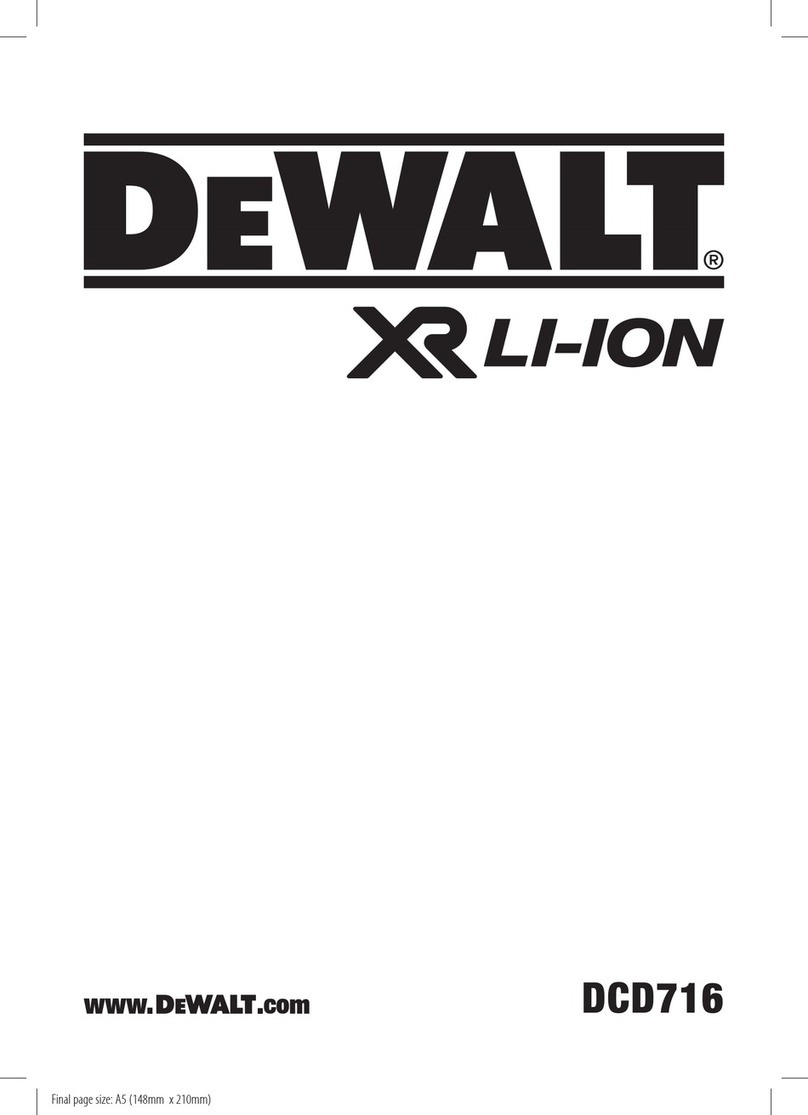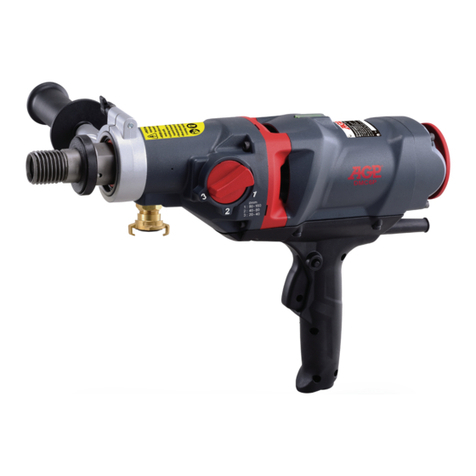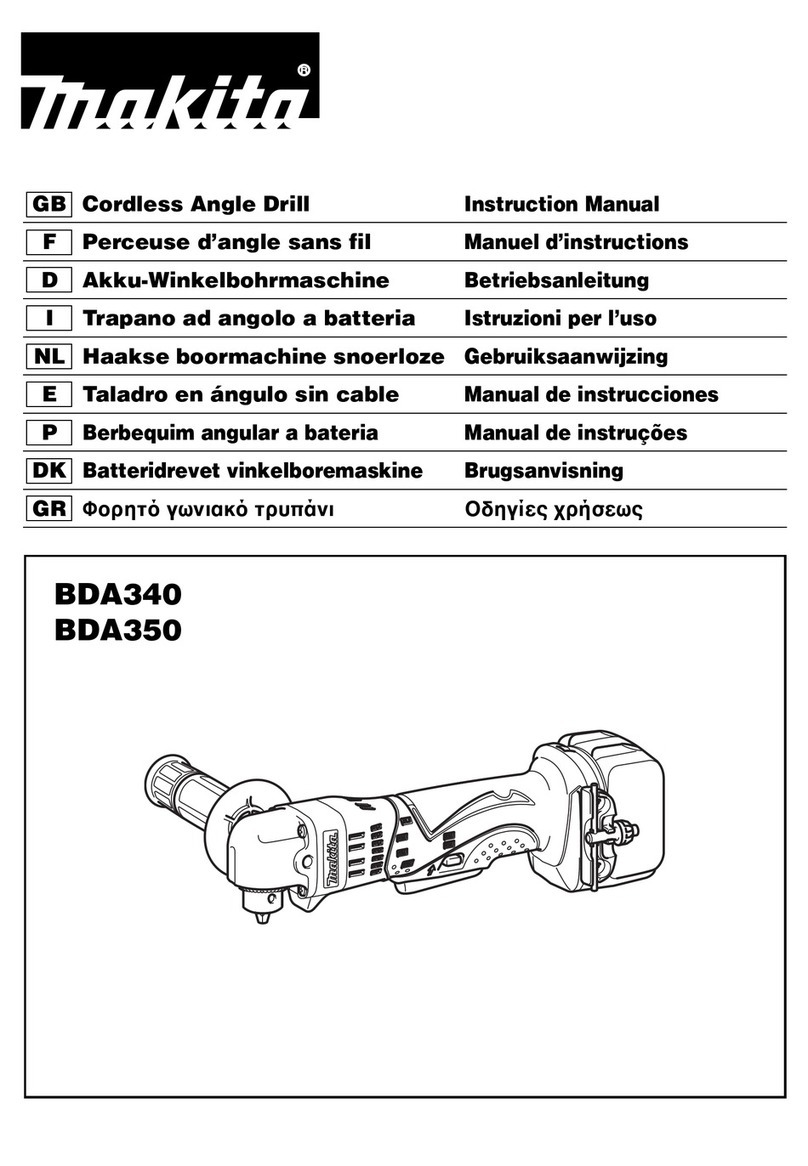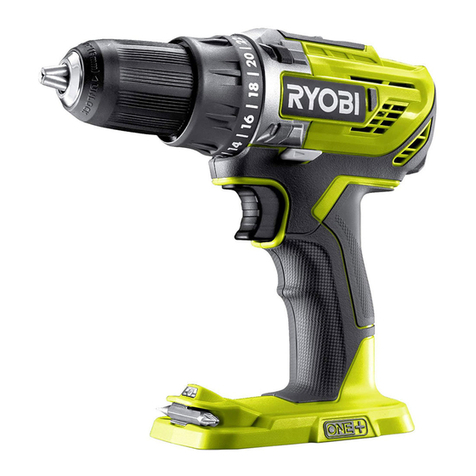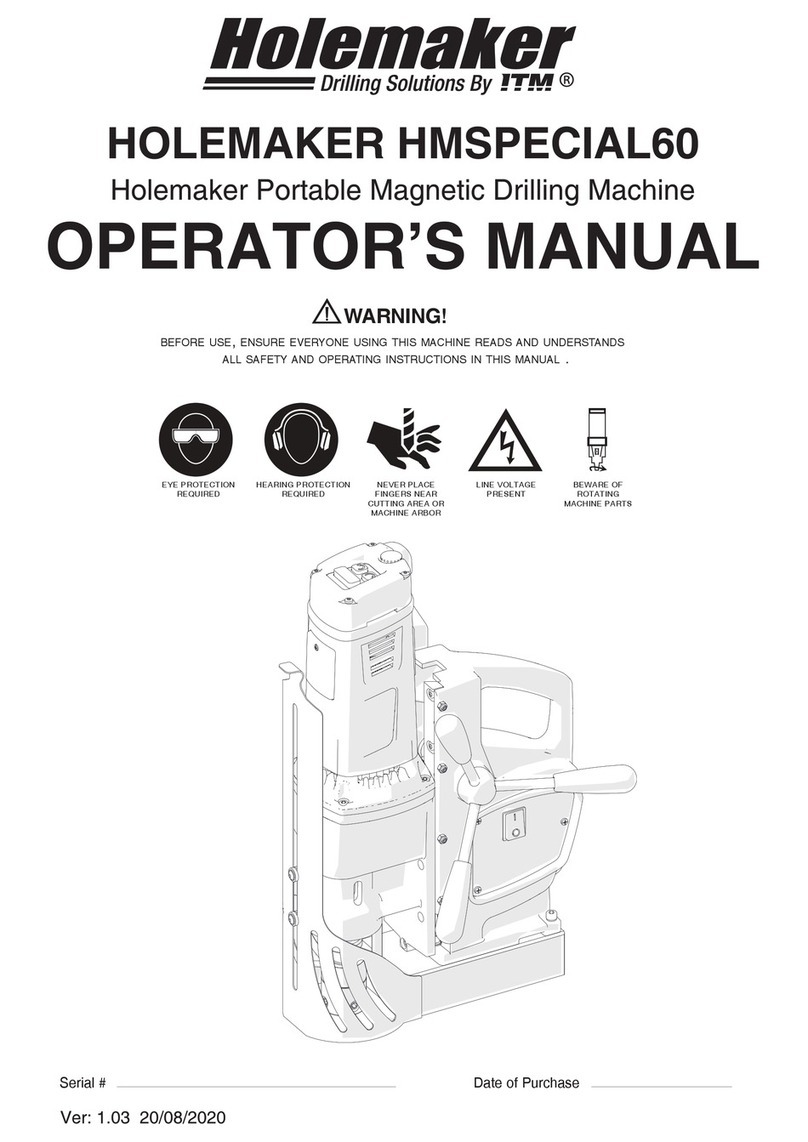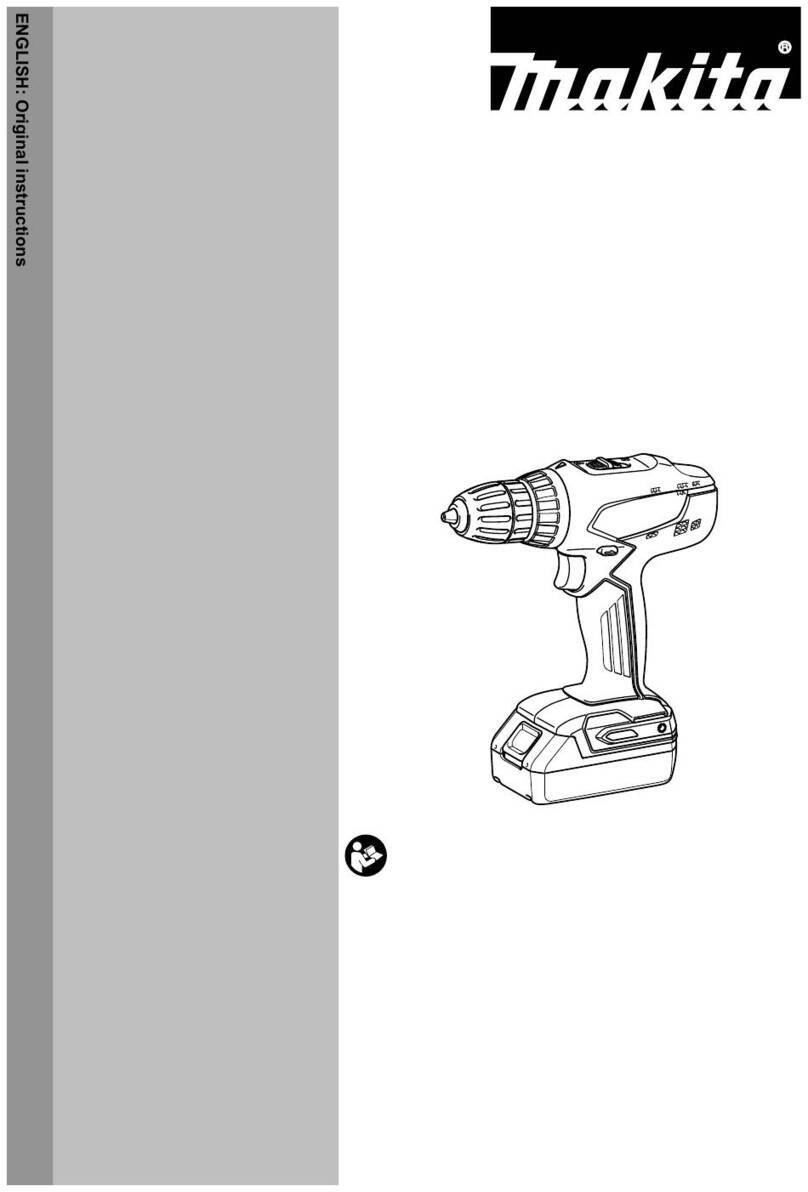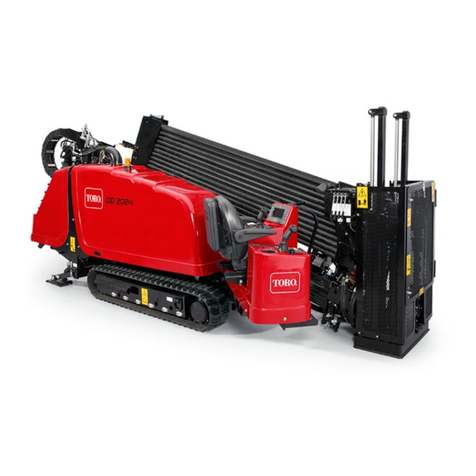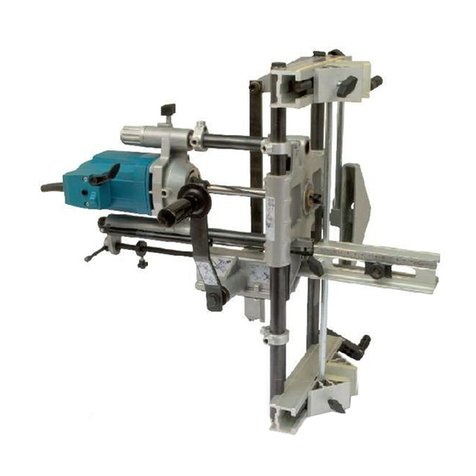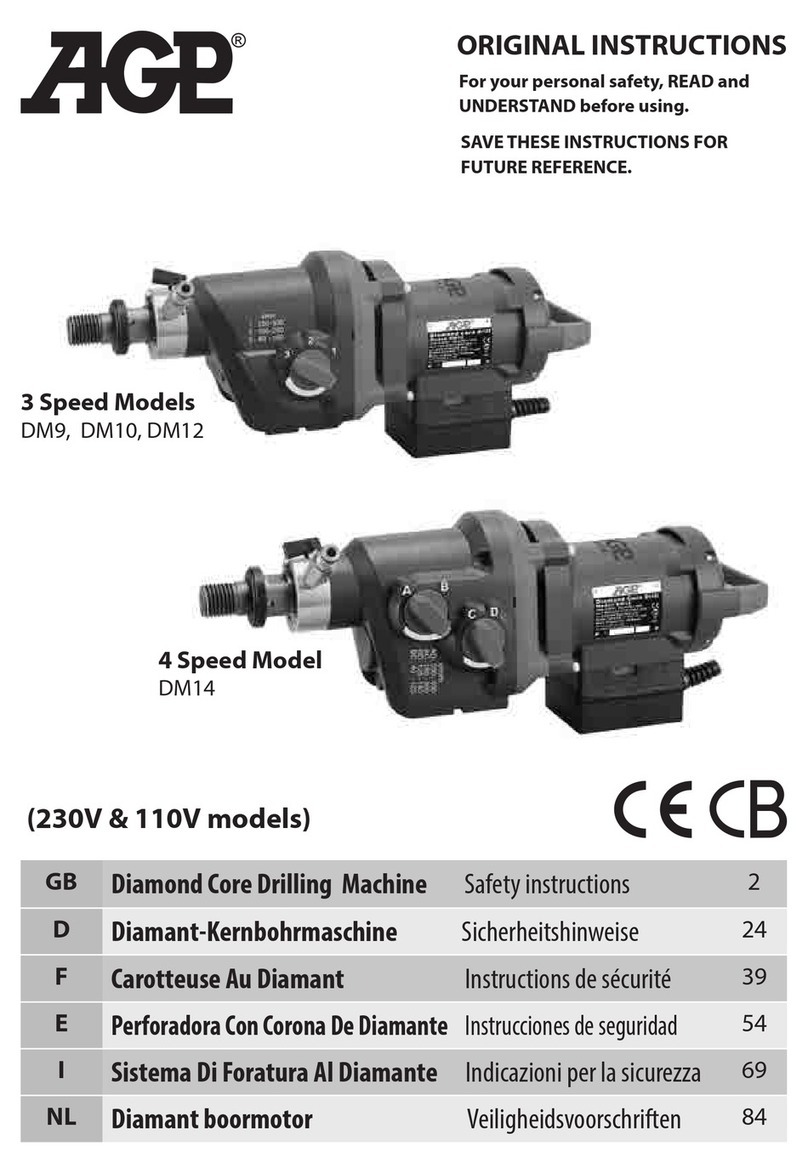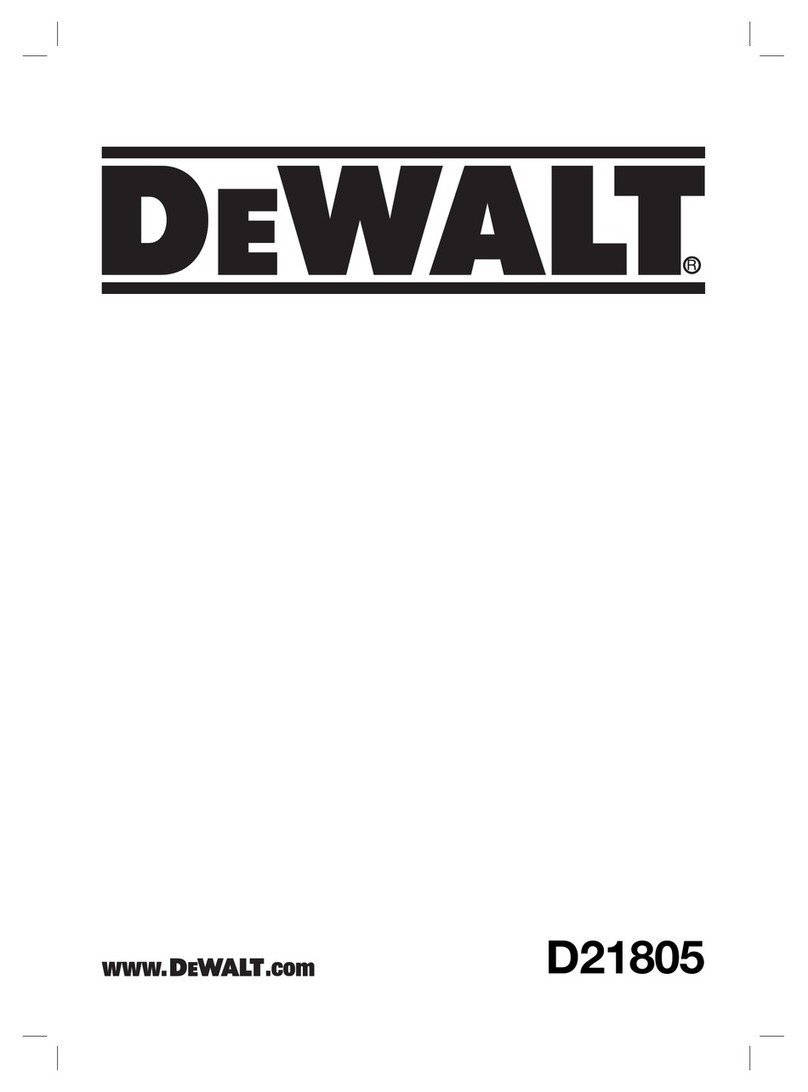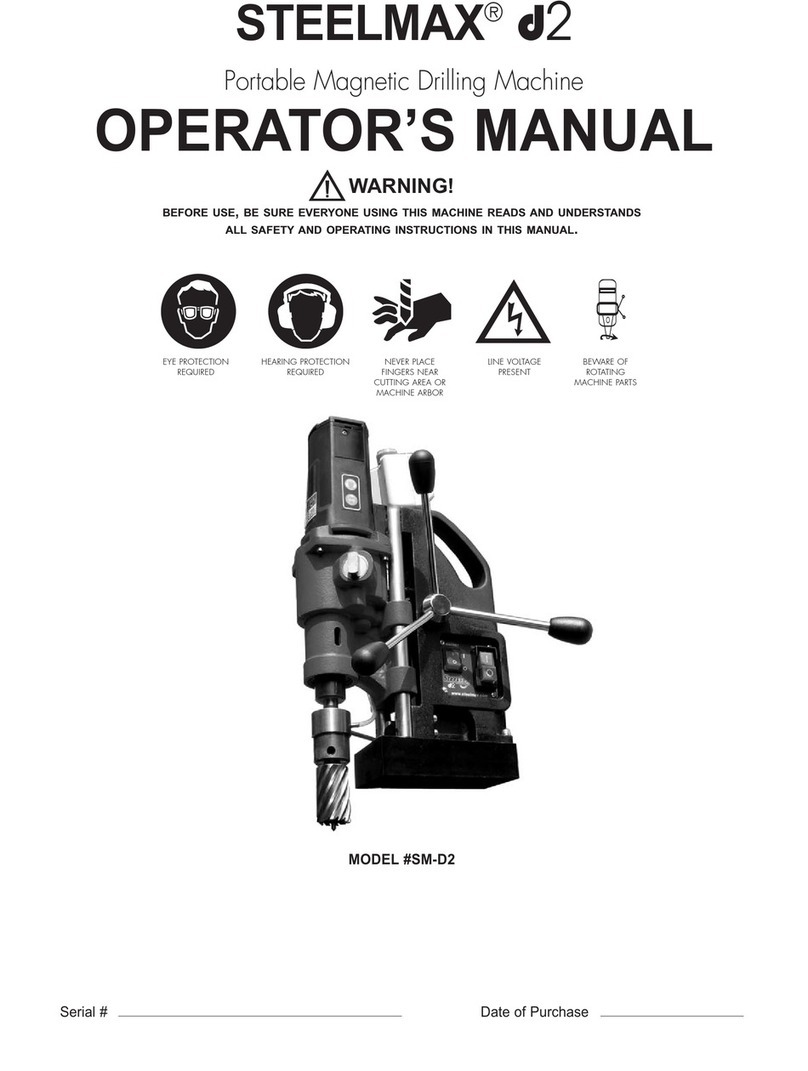TBT ML700 Series User manual

General
Erstelldatum: 03.02.2012 Version: 1_0 File: 106582_1
ML700 - 1 - 22 000 / 106582 –11 27.03.2012 Inh. 1
Contents
1General..........................................................................................................................1
1.1 Introduction....................................................................................................................2
1.1.1 Structure of the operating instructions ...........................................................................2
1.1.2 General notes ................................................................................................................4
1.2 Safety.............................................................................................................................6
1.2.1 General safety instructions.............................................................................................6
1.2.2 Intended application.....................................................................................................11
1.2.3 General hazard potential with this machine .................................................................11
1.2.4 Definitions....................................................................................................................15
1.2.5 Other precautionary measures.....................................................................................16
1.2.6 Requirements imposed on the user/operator...............................................................17
1.2.6.1 Requirements for safety devices..................................................................................18
1.2.7 Personal protective equipment.....................................................................................19
1.2.8 Safety during repair and maintenance .........................................................................20
1.2.9 Safety during tool change and set-up ..........................................................................21
1.2.10 Behaviour in an emergency .........................................................................................21
1.2.11 Danger zones...............................................................................................................22
1.3 Technical Specifications: .............................................................................................24
1.3.1 Description of the system.............................................................................................24
1.3.1.1 Basic machine..............................................................................................................24
1.3.1.2 Coolant system............................................................................................................26

General
Erstelldatum: 03.02.2012 Version: 1_0 File: 106582_1
ML700 - 1 - 22 000 / 106582 –11 27.03.2012 Inh. 2
1.3.2 Machine diagram .........................................................................................................27
1.3.2.1 Machine identification ..................................................................................................28
1.4 Technical data..............................................................................................................29
1.4.1.1 Deep-hole drilling machine...........................................................................................29
1.4.1.2 Electrical system..........................................................................................................30
1.4.1.3 Machine drive (deep-hole drilling/conventional)...........................................................31
1.4.1.4 Workpiece clamping.....................................................................................................36
1.4.1.5 Coolant system............................................................................................................40
1.5 Drilling technique BTA .................................................................................................45
1.5.1 Principle of the BTA drilling technique .........................................................................45
1.5.2 Cutting speed...............................................................................................................46
1.5.3 Programmed feed rate.................................................................................................47
1.5.4 Coolant lubricant pressure - flow rate .........................................................................48
1.5.5 Drilling tool...................................................................................................................49
1.6 Drilling procedure.........................................................................................................50
1.6.1 Principle of single-lip drilling method (ELB)..................................................................51
1.6.2 Cutting rate ..................................................................................................................52
1.6.3 Feed speed..................................................................................................................53
1.6.4 Cooling lubricant pressure and flow rate......................................................................54
1.6.4.1 Standard application ....................................................................................................55
1.6.4.2 Comparison table Deep-hole drilling oil / emulsion......................................................57
1.6.5 Drilling tool...................................................................................................................58
1.6.5.1 Tool length (ELB).........................................................................................................58
1.6.5.2 Tool regrinding.............................................................................................................59

General
Erstelldatum: 03.02.2012 Version: 1_0 File: 106582_1
ML700 - 1 - 22 000 / 106582 –11 27.03.2012 Inh. 3
1.6.6 Utilisation of standard accessories...............................................................................64
1.6.6.1 Submersion method.....................................................................................................64
1.6.6.2 Seal housing method ...................................................................................................65
1.6.7 General remarks with regard to bottle boring...............................................................66

General
Preparation date: 03.02.2012 Version: 1_0 File: 106582_1
ML700 - 1 - 22 000 / 106582 –11 27.03.2012 1
1 General
This chapter is subdivided into three sections:
Introduction: Chapter 1.1
Structure of the operating instructions, general notes
Safety: Chapter 1.2
Safety instructions, hazard potential
Technical Specifications: Chapter 1.3
Short description, machine diagram, technical data, drilling procedure

General
Preparation date: 03.02.2012 Version: 1_0 File: 106582_1
ML700 - 1 - 22 000 / 106582 –11 27.03.2012 2
1.1 Introduction
1.1.1 Structure of the operating instructions
The present operating instructions manual is intended for different groups of persons thus
consisting of separate chapters. You find the structure of the documentation and an over-
view of the chapters in the table of contents below. Additionally, each chapter begins with
its own table of contents. Each sheet of the documentation has its own sheet number at
the right bottom of the page. The first number (1-digit) refers to the chapter, the second
(max. 3-digit) is the running sheet number of the chapter.
Chapter
Description
Group of persons
1
General
All persons which have to
carry out work on the
machine.
1.1
Introduction
–Explanation of the operating instructions
–General notes
–Warranty provisions
–Copyright
–Reservation of title
1.2
Safety
–Safety instructions for the machine handling
1.3
Technical Specifications:
–Description of functions
–Technical data
–Description of technology
–Tool regrinding
2
Installation
–Notes on the transport
–Notes on the foundation work
–Notes on the installation of the machine/machine com-
ponents
–Notes on the commissioning of the hydraulic, pneu-
matic and central lubrication systems
Transport personnel,
assembly personnel,
commissioning personnel

General
Preparation date: 03.02.2012 Version: 1_0 File: 106582_1
ML700 - 1 - 22 000 / 106582 –11 27.03.2012 3
Chapter
Description
Group of persons
3
Description
–Mechanical assembly groups
–Coolant system
–Hydraulic system
–Pneumatic system
Operating personnel,
commissioning person-
nel,
service personnel
4
Operation and set-up
–Data relating to specific safety devices
–Data relating to the operation and control components
–Details on programming support
(machine screens, machine data, NC programs)
–Data relating to fault messages
–Data relating to the tool change
–Data relating to the set-up work
Operating personnel,
installation personnel,
programmers
5
Repair
–Safety instructions relating to repair work
–Data relating to the maintenance of mechanical, hy-
draulic, pneumatic and electrical assembly groups
–Inspections (preventive maintenance)
–Repair work
–Setting and adjustment work
–Disposal
Operating personnel,
commissioning person-
nel,
service personnel
6
This chapter is relevant only to the service and assembly
personnel and serves as support for troubleshooting,
commissioning and installation of individual assembly
groups.

General
Preparation date: 03.02.2012 Version: 1_0 File: 106582_1
ML700 - 1 - 22 000 / 106582 –11 27.03.2012 4
1.1.2 General notes
The operating instructions must be read and always kept available at the
machine.
We furnish no guarantee for the data and pictures contained in this docu-
mentation; they may be changed without any further notification. The fig-
ures may slightly differ from the actual construction state of the machine
which however should not impair your understanding.
In order to achieve the full performance and precision, the machine re-
quires not only proper operation but also care and maintenance.
Check your machine regularly and observe the specified maintenance in-
tervals. If necessary, make sure that our customer service checks the
machine; it is always at your disposal.
Service addresses:
Customer Service
Mr Klein, R.: ++49 7123 / 976-302
Mr Hadolt: ++49 7123 / 976-301
FAX: ++49 7123 / 976-300
Spare parts service
Mr Roszick: ++49 7123 / 976-131
Mrs Dieterle: ++49 7123 / 976-130
FAX: ++49 7123 / 976-139
If you have any queries, please specify the machine type, machine number
and the designation from this documentation together with the sheet num-
ber.
We can only provide the contractually agreed warranty for defects on the
machine when the instructions and regulations contained in the documen-
tation have been complied with and when no interventions and conver-
sions have been performed without prior consent of the manufacturer of
the product.
The guarantee period is generally 12 months as of the delivery date with
one-shift operation, if not otherwise agreed in writing.
The purchase contract remains always binding.
The warranty of the manufacturer does not extend to:
–Damage caused by non-compliance of the user with written instructions
by the manufacturer in relation to operation and maintenance of the
equipment.
–Damages caused by natural wear.
–Damages caused by force majeure.
–Damages caused by any type of operator errors or by improper use or

General
Preparation date: 03.02.2012 Version: 1_0 File: 106582_1
ML700 - 1 - 22 000 / 106582 –11 27.03.2012 5
operation of the plant or its parts.
–Damages caused by a third party.
–Damages caused by the use of the plant or its parts under altered con-
ditions (e.g. materials, workpieces, tools, clamping devices, operating
materials, cutting parameters, programmes, etc.), especially without
consultation of and written release by the manufacturer.
–Damages to be attributed to altered environmental conditions.
The contractor reserves unrestricted ownership to the goods delivered
pending payment in full of all liabilities from the business activities of the
purchaser.
The purchase contract remains always binding.
For this documentation, we reserve all rights for the data and drawings, in
particular the priority for patent applications. Without our prior consent, the
documents may not be copied or made accessible to third parties, neither
completely nor abridged.
Documents supplied in advance may not comply in any case with the state
of the machine as delivered because of possible updates and technical
modifications.
Please note the date of issue!
This documentation is not subject to an automatic updating service. The
scope corresponds to the state as accepted and delivered.
The following modifications were documented and automatically replaced:
–Retooling to other workpiece types
–Fluid adaptation (coolant/pneumatic system and hydraulic system)
–Electric circuit diagram adaptation
–Software adaptation
These modifications must be marked with a modification index and the
modification date.
Upon completion of the installation/assembly work an acceptance record
will be prepared/filled in (together with the plant operator).
The operator and the supplier will get one copy each.

General
Preparation date: 03.02.2012 Version: 1_0 File: 106582_1
ML700 - 1 - 22 000 / 106582 –11 27.03.2012 6
1.2 Safety
1.2.1 General safety instructions
This operating instructions manual contains important information prereq-
uisite for safe and efficient working with the machine. It should be kept
readily accessible in the vicinity of the machine.
Before installation and commissioning, carefully read and observe the op-
erating instructions.
The operating instructions manual does not contain any repair information.
Repairs should only be carried out by specialist personnel of the compe-
tent customer service.
All warning and prohibitive signs at the machine must always be observed.
Legible signs must be replaced.
Nonobservance of the safety instructions may endanger persons as well
as the environment and the machine.
Nonobservance results in the loss of all claims for damages.
This machine may only be operated by trained and qualified personnel.
Persons entrusted with transport, storage, operation or maintenance and
repair of the machine must be familiar with the contents of the operating
instructions manual. These instructions, particularly the safety instructions,
must be obeyed.
In addition to the operating instructions, observe the valid general, statu-
tory and other regulations for the prevention of accidents and for environ-
mental protection which are in force in the particular country.
The following safety instructions are marked by symbols and described by
signal words. The operating instructions describe the dangers. The expla-
nations of these symbols / signal words must be read with care in order to
learn their meaning and effect.
DANGER
This symbol/signal word indicates direct hazards that may cause death or
serious injury, if the operating and work instructions are not complied with
exactly and the hazards avoided.
WARNING
This symbol/signal word indicates hazards that cause serious injury. This
warning is shown next to work instructions or operating instructions, that
are to be complied with exactly, in order to avoid serious damage or de-
struction of the machine or its components.

General
Preparation date: 03.02.2012 Version: 1_0 File: 106582_1
ML700 - 1 - 22 000 / 106582 –11 27.03.2012 7
CAUTION
This symbol/signal word indicates hazards that cause light injuries. This
note is shown next to work instructions or operating instructions, that are to
be complied with exactly, in order to avoid damage to the machine or its
components.
NOTE
This symbol/signal word stands for technical requirements and important
information (tips), that must be specially complied with in order to prevent
any damage to property and the environment and to ensure a failure-free
operation.
DANGER
Risk of burns due to a hot surface
Tool, spindle and revolver may reach temperatures of more than 80 °C!
May cause burns in case of contact.
DANGER
Pressure vessel
Pressure relief prior to disassembly or maintenance work
Gas prefilling pressure:_____ bar (entered on the sign by hand)
Must only be filled with nitrogen.
DANGER
due to corrosive substances
DANGER
due to a suspended load
DANGER
due to oxidising substances
DANGER
due to explosion hazard substances
For scavenging and flushing the gearbox casings and the liquid tanks and
for cleaning the guideways and other machine parts. Do not use low-
boiling, combustible solvents such as naphtha, benzene or similar.
DANGER
dangerous voltage
–Danger to life due to electric shock

General
Preparation date: 03.02.2012 Version: 1_0 File: 106582_1
ML700 - 1 - 22 000 / 106582 –11 27.03.2012 8
This symbol/signal word indicates direct hazards that may cause death or
serious injuries. In areas where this symbol is fitted to the machine, only
qualified and trained personnel (operating; maintenance and repair per-
sonnel) may carry out all work and repairs.
WARNING
of laser beams
Failure to heed these safety instructions can result in serious injury.
DANGER
Danger of stumbling
DANGER
Danger of slipping
CAUTION
Electrostatically affected components
CAUTION
Magnetic fields
Intense attractive forces of magnets are also able to cause injuries or
crushing over extended distances.
Electronic or mechanical measuring devices/units can also be damaged or
destroyed by strong magnetic induction. Keep objects with magnetic com-
ponents away from computers, screens and magnetic data carriers.
DANGER
against hand injuries Crushing hazard.
CAUTION
against carrying magnetic or electronic data carriers
CAUTION
against carrying tramp metal
PROHIBITION
No access for persons with a pacemaker
This symbol warns persons with pacemaker to stay out of the area where
such a sign has been put. Electromagnetic or magnetic fields may occur
here that are intense enough to disturb pacemakers or even render them

General
Preparation date: 03.02.2012 Version: 1_0 File: 106582_1
ML700 - 1 - 22 000 / 106582 –11 27.03.2012 9
inoperative.
Minimum distance: 1 m
PROHIBITION
Do not touch
PROHIBITION
persons with metal implants
PROHIBITION
carrying magnetic or electronic data carriers
PROHIBITION
carrying tramp metal or clocks
PROHIBITION
Keep out!
Telescopic covers may only be entered on channelled plates or on a non-
slip support with lateral limit stops (e.g. wooden boards) for maintenance
and inspection work when the machine has come to a standstill.
Observe the operating instructions
Wear protective gloves
In order to avoid cutting injuries, protective gloves must be worn during
set-up and repair work as well as during the handling of cooling lubricants.
Wear eye protection
Safety goggles must always be worn when handling cooling lubricants,
lubricants and hydraulic oils.
Wear protective helmet
A protective helmet must always be worn if there is danger of head inju-
ries, especially by falling objects, assembly and disassembly work over-
head as well as during crane operation.
Wear safety shoes
In order to protect against crushing, safety boots must be worn, which are
provided with steel caps.

General
Preparation date: 03.02.2012 Version: 1_0 File: 106582_1
ML700 - 1 - 22 000 / 106582 –11 27.03.2012 10
This symbol is a warning against possible environmental hazard.
Failure to heed this direction can result in serious damage to the environ-
ment.
Other
signs
Signs directly attached to the machine such as
arrows indicating the direction of rotation, signs for fluid connections must
always be observed and kept in a completely legible state.

General
Preparation date: 03.02.2012 Version: 1_0 File: 106582_1
ML700 - 1 - 22 000 / 106582 –11 27.03.2012 11
1.2.2 Intended application
Purpose
Machining of shafts by:
–deep hole drilling with BTA (push boring/pull counter boring/roller bur-
nishing/skiving)
–Deep-hole drilling with single-lip drilling (ELB)
–Bottle boring
The machine is not suitable for any other applications.
Every constructional modification of the machine to use it for other purposes
is permitted only after consulting and approval by TBT - Tiefbohrtechnik
GmbH+Co. Only workpieces determined for the respective application may
be machined.
It is forbidden to make any modifications of safety-relevant components
without written approval by TBT - Tiefbohrtechnik GmbH+Co. The safety
responsibility of the manufacturer (product liability) otherwise becomes void.
Machining is permitted only within the power limits. For this, the specifica-
tions in the section Technical Data (section 1.3) are authoritative.
1.2.3 General hazard potential with this machine
The machine was developed, designed and built according to technical safety as-
pects. Usage contrary to that intended or usage by unqualified personnel may result
in danger
to life and health of the operator
to the machine itself
to other property of the operator
to the performance of the machine
and consequently to its economy.
Should the work sequence and intended use of the machine allow for it, all hazard
points must be clad as to prevent danger for life or limb of the operating personnel
during proper and careful handling. During operation it is not necessary and there-
fore prohibited to tamper in the working area or remove protective devices in order
to be able to interfere with the operation.
On machines, where for contractual reasons it was possible to provide a protective
device not corresponding to the EC directives (e.g. attachment of clamping/loading
devices, etc. by the customer), the end customer shall be responsible for the provi-
sion of guards or other safety devices as part of the overall safety of the system.
These devices and safeguards must correspond to the applicable EC directives.

General
Preparation date: 03.02.2012 Version: 1_0 File: 106582_1
ML700 - 1 - 22 000 / 106582 –11 27.03.2012 12
The general hazard potential in improper and careless use of the machine consists
of:
Mechanical danger through
impact, due to the kinetic energy of the moving masses
pinching, shearing and cutting
grabbing and wrapping and drawing-in
penetration or piercing
sharp edges and corners
fluids under pressure
freely movable parts.
Electrical danger through
electrical contact (direct or indirect).
The plant is equipped with an overcurrent protective device according to EN 60204.
It prevents that the plant will be damaged and persons be endangered in case of
short circuits. It is compulsory to always use original fuses (with the appropriate re-
sponse time and amperage).
Combination of dangers through
faulty assembly
incorrect clamping of tools
tool wear
failure and/or incorrect application of protective measures.
Danger through centrifuges
The electro-automatic cover lock or screwed covers must only be opened if drum
is out of operation. Do not climb on the centrifuge during operation, do not reach
into the feed opening or poke in it with other items.
Danger due to laser radiation
The machine is equipped with a laser unit / optical sensors:
Avoid any contact with your eyes!
Never look into the beam, even when using optical instruments.
Everyone working on the machine must be warned against the dangers of direct ir-
radiation in the eyes or longer direct irradiation on the skin.

General
Preparation date: 03.02.2012 Version: 1_0 File: 106582_1
ML700 - 1 - 22 000 / 106582 –11 27.03.2012 13
Danger through pumps
Protective devices and mountings may only be removed when
the pumps are emptied,
motors and driven machines are stationary,
the plant is electrically dead and protected against restarting.
Danger through emission
The equivalent continuous sound pressure level of the deep-hole drilling machine
is less than _ see Noise level measurement report _dB(A).
Any generated oil mists, depending on the oil grade used, have the danger class
according to the respective safety data sheet (DIN 52900).
do not inhale oil mist!
Oil mist is harmful and may contain carcinogenic substances
Hydraulic oils and lubricants may easily cause slipping on the floor and in the plant.
For reasons of accident prevention, therefore, irreproachable cleanliness must be en-
sured when handling these liquids.
Danger through fluids
The plant is operated with materials which can pollute water. The plant operator
is responsible for complying with the regional and national statutes (e.g. water re-
sources act).
Pay attention when using hot process materials (burn hazard).
Fire protection
Keep combustible and easily flammable substances away from the working area.
Combustible substances are:
Paper
Cleaning rags
Oil
Naphtha or colours.
In contact with oils, greases and glycerines oxygen leads to explosion.
Avoid any contact with oxygen when handling these substances.
Oxygen must never be used for cleaning, cooling, filling of hydraulic accumulators or
ventilation.

General
Preparation date: 03.02.2012 Version: 1_0 File: 106582_1
ML700 - 1 - 22 000 / 106582 –11 27.03.2012 14
Residual risk
The plant is equipped with safety devices and has been checked for safety. How-
ever, certain residual risks cannot be excluded. Residual dangers, i.e. potential, not
obvious danger are:
Human error
Noise
Ejection of parts
Control system failure
Sharp tools in set-up work
Fire
Allergic reactions, mucous membrane irritation through dust or lubricants
Hot machine parts, tools or workpieces
Injuries through rotating tools
Chemicals and cleaning agents
Magnetic fields
Touching of live cables
Safety precautions
Where is the next fire extinguisher?
Where is the next fire alarm?
Where is the next telephone? --> What is the emergency number?
Where is the next first aid box / eye wash?

General
Preparation date: 03.02.2012 Version: 1_0 File: 106582_1
ML700 - 1 - 22 000 / 106582 –11 27.03.2012 15
1.2.4 Definitions
Danger zone
–The area within or in the vicinity of the machine in which the safety or
health of a person staying in the zone may be endangered.
Endangered person
–A person responsible for the installation, operation, conversion, mainte-
nance including cleaning, troubleshooting or transportation of a machine.
Safety area:
It is possible to define individual safety areas because of the complexity of
the drilling and milling plant.
–Safety zone I : Control panel at the main command panel
–Safety zone II : Working area of the machine (area of the moving as-
sembly groups of the machine)
A safety zone is defined as the area which is determined by a different de-
gree of danger for the operating personnel. In the area of safety zone II
there is a higher endangering due to moving assembly groups, chips and
coolant.

General
Preparation date: 03.02.2012 Version: 1_0 File: 106582_1
ML700 - 1 - 22 000 / 106582 –11 27.03.2012 16
1.2.5 Other precautionary measures
CAUTION
Tools rotating at high speed are located on the machine. These tools can
cause major maiming and cutting injuries. Under no circumstances may
rotating tools be touched or approached with the hands, other parts of the
body or objects.
Stationary tooling can cause cut injuries when touched.
Replace blunt tools immediately.
Change tools only with tools intended for this purpose.
Flying chip may be ejected while machining. Wear adequate protective
clothing.
Ensure that no persons or objects are located in the range of the flying
chip.
Machined workpieces may have sharp edges and burrs. These can cause
cutting injuries.
Cutting tools may develop heat when used to machine workpieces. When
changing tools and workpieces, ensure that the tools are cooled down.
Through appropriate in-house instructions and checks ensure that the vicin-
ity of the workplace is always clean and orderly.
Shatterproof safety glass has been provided as safety shrouding for the
machine. Get damaged safety glass replaced immediately.

General
Preparation date: 03.02.2012 Version: 1_0 File: 106582_1
ML700 - 1 - 22 000 / 106582 –11 27.03.2012 17
1.2.6 Requirements imposed on the user/operator
WARNING
Risk of injury in the event of any insufficient qualification of the op-
erator / maintenance person
If insufficiently qualified persons work on the machine or are present within
the environment of the machine, this may cause serious injuries and seri-
ous damage or the destruction of the machine or its components.
–Only qualified persons may work on the machine
–Any unqualified persons must keep away from the danger area of the
machine.
The operator must have the necessary technical qualifications to be able to
professionally operate the machine
–after instruction in how to operate it and
–after reading the operating instructions.
to be operated properly.
It is of particular importance that he is able to recognise dangers resulting
from the use of the machine.
The person in charge of the machine has the duty to make the operating
instructions manual belonging to the machine available to the machine
operator. The person in charge of the machine is responsible for making
sure that the machine operator has attentively read and understood the
operating instructions. The operating instructions should be kept in the
immediate vicinity of the machine.
The operator must use the machine only in a serviceable condition. All
factors impairing mental concentration of the operator should be eliminated
from the outset, to ensure proper operation of the machine.
The machine must only be operated by personnel of whom proper use can
be expected.
The machine operator must make sure that no unauthorised person uses
the machine. The machine operator is responsible for other persons in the
working area. The competencies for the different activities on the machine
must be clearly defined. Ambiguous competencies are a safety risk. A
lockable switch (main switch) is provided in the supply line to the machine
to make operation by unauthorised personnel impossible.
It is forbidden to operate the machinery while under the influence of alco-
hol, drugs or medication that affects one's reactions.
Table of contents


